Week 163: Footloose: Go and then stop
We start with a rush! Ephesus, Pammukale, Heriopolis… then it’s waiting on anchor for the rest of the week.

Bright and early Sunday morning, we collected a car and drove from the marina in Kuşadasi to Ephesus. For those not familiar, Ephesus is one of the premier Ancient Greek and Roman cities and was at one stage second only to Rome as the administrative city ruling the Eastern Roman Empire. It was founded in the 10 century BCE by a prince from Athens who was told by the Oracle at Delphi, "A fish and a boar will show you the way." These images feature frequently in the carvings and mosaics in the city. At one time, it was built around a port; the silt from the river has now placed it about 5 kilometres from the sea. Its Temple of Artemis, built in 550 BCE, was one of the Seven Wonders of the Ancient World.





Besides its grand buildings and wealth, it also features several prominent historical figures. Despite hearing about Ephesus several times, we had little idea what we would see.
Part of its fame comes from its role in the bible as one of the seven churches of Asia addressed in the Book of Revelations. It's also suspected (although this can't be proven) that it's where the Gospel of John was written. Tradition holds that John the disciple and Mary (yes, that Mary, Jesus' mother) settled in Ephesus after Jesus' crucifixion. Indeed, it's undisputed that it was one of the most important Christian centres of the world and a hub where Christianity spread to the Roman Empire. The first church venerating Mary was built here and was the site of two early Christian ecumenical councils establishing doctrine. Think three months of arguments where the losers got excommunicated! Ephesus is an essential stop on any Christian pilgrimage.
More interestingly (for me), it played an essential part in the Marc Antony and Cleopatra story. It's where Marc Antony raised his mighty fleet that was defeated off the coast of Preveza (which we discovered back in Week 149). We were both surprised by the Egyptian influence on the city, present in decorations and carvings that have been excavated, but perhaps we shouldn't be. Egypt was a powerful empire and not far to the south from here.
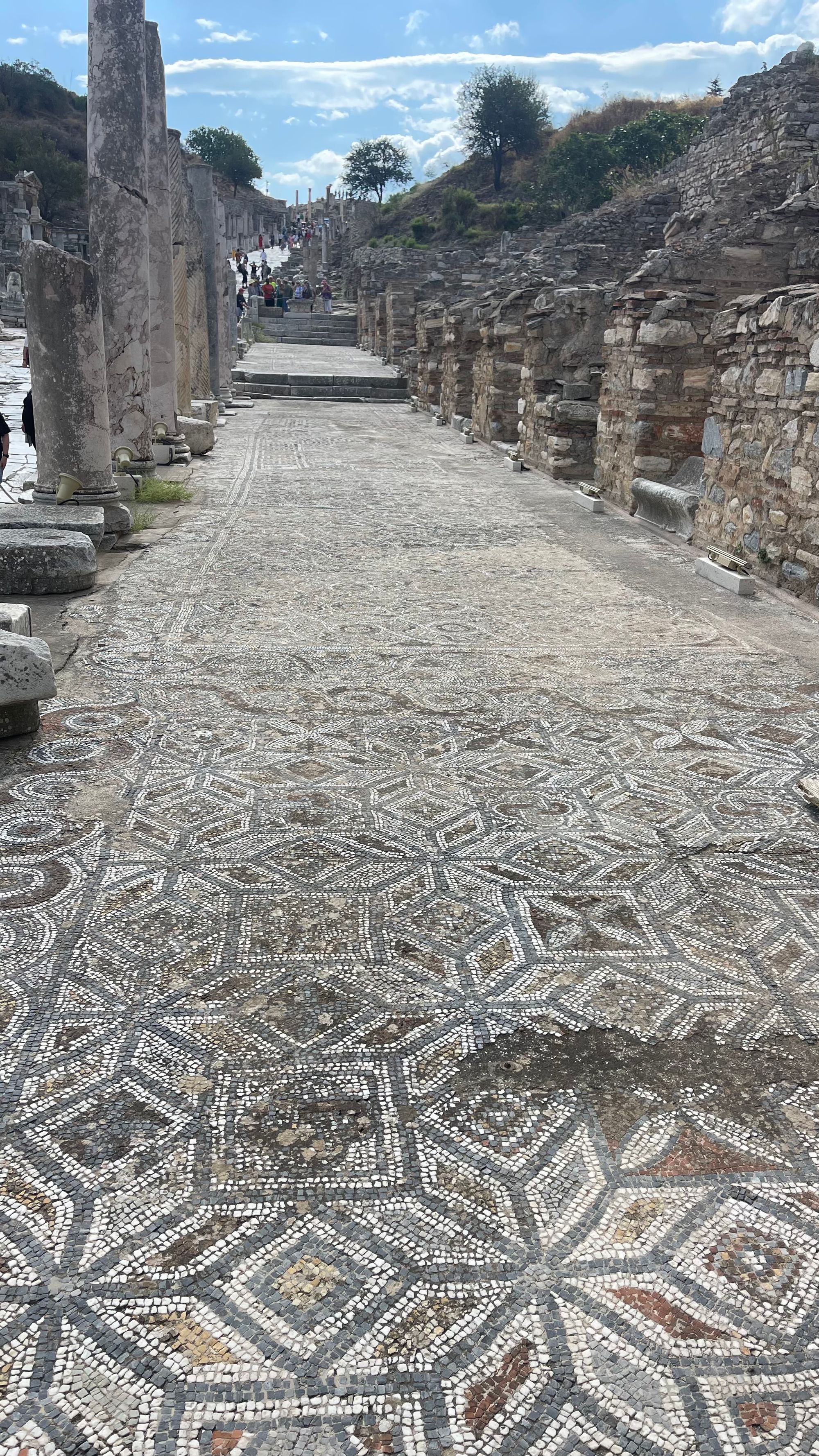


The story I found most fascinating is about Cleopatra's younger sister, Arsinoe. She was exiled to Ephesus after opposing Cleopatra (a dispute over the future of Egypt, Cleopatra was cosying up to Rome, and Arsinoe thought Egypt should remain more independent). In Ephesus, she was executed on the command of Marc Antony (at the behest of Cleopatra), apparently by her Roman lover – it seems Arsinoe wasn't against a bit of cosying up to Rome either...
ANYWAY... there is speculation that the remains of a young lady of about the right age discovered beneath the octagonal tower were those of Arsinoe. This is primarily conjecture and perhaps wishful thinking. Unfortunately, the claim is unverifiable as the skeleton was so poorly handled in its excavation that DNA samples weren't possible, and its skull (which contains the best DNA) went missing in Germany. It's still an interesting story.



Of all the buildings in Ephesus, I most enjoyed the Library of Celsus. A consul commissioned it in the 110s CE to honour his father, Tiberius Julius Celsus Polemaeanus. It was completed sometime during the Emperor Hadrian's reign. An architectural marvel, it is one of the only surviving great libraries of the ancient world and the third largest. Its contents were destroyed by fire or Goths (possibly both), and then the facade in an earthquake around the 10th century. Fortunately, all the facade elements remained, and archaeologists restored it in the 70's and 80's. It is a spectacular building, very ornate and beautiful.


Fortunately, we arrived early at Ephesus and started at the south end, away from the hordes of tourists on buses that descend after about 10 am at the north end (to walk down the hill). We had it to ourselves for an hour or so and then, as we reached the northern end, battled our way back through the crowds to escape!

From Ephesus it was off to Heriopolis and Pammukale. We stayed overnight in a hotel, then explored the travertines and the ancient city the next day.
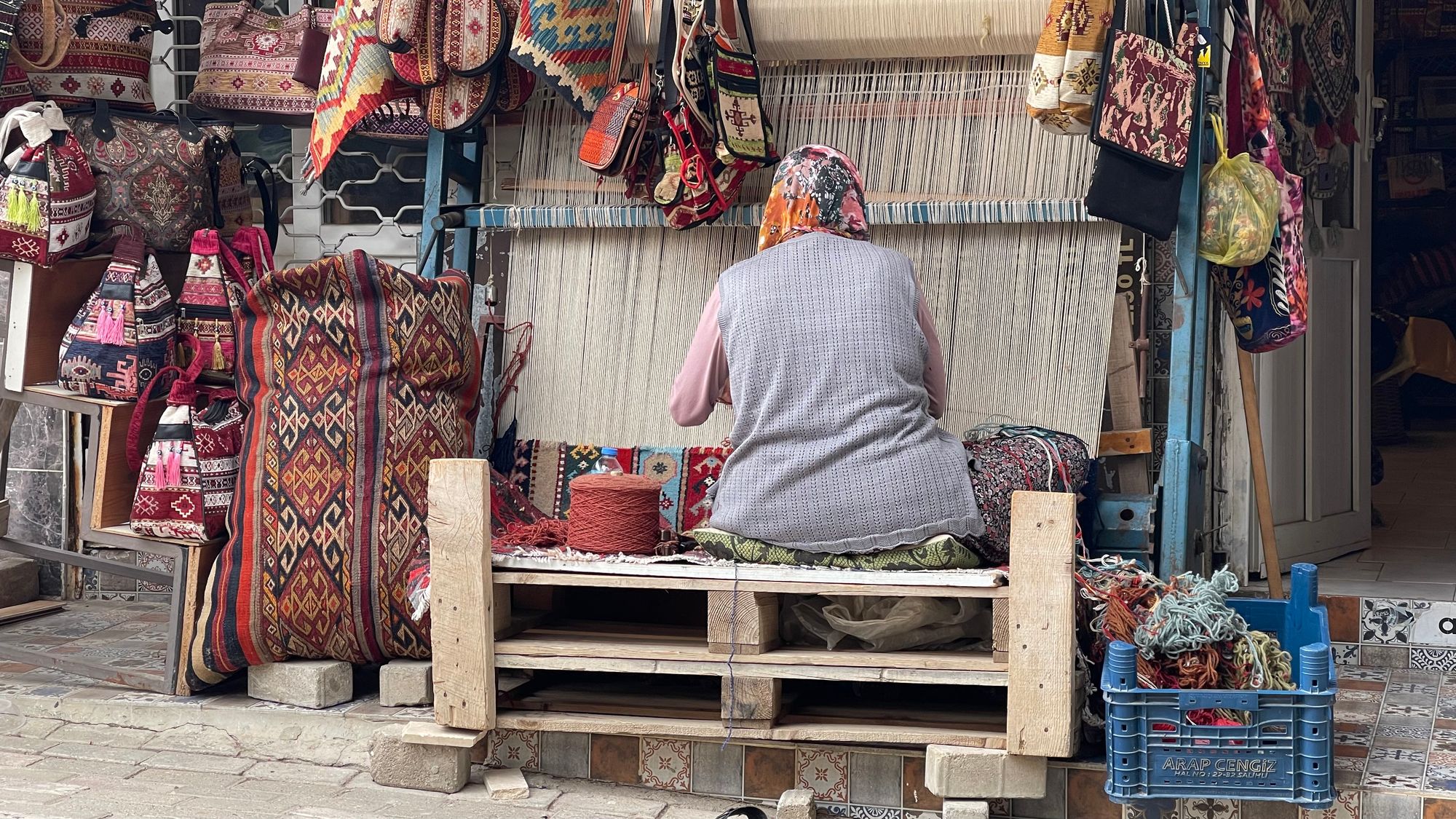
This is another spectacular region of Türkiye. Pammukale is most famous for its hot springs and marble white travertines. These cascading pools are made from calcium left by the mineral-rich water. Unfortunately, the reality today is that it's not quite as spectacular as the photos online; mass tourism and a growing region have taken their toll. The majority of water which used to feed the pools is now diverted for town use. Many of the online brochure photos also have a heavy dose of Photoshop!



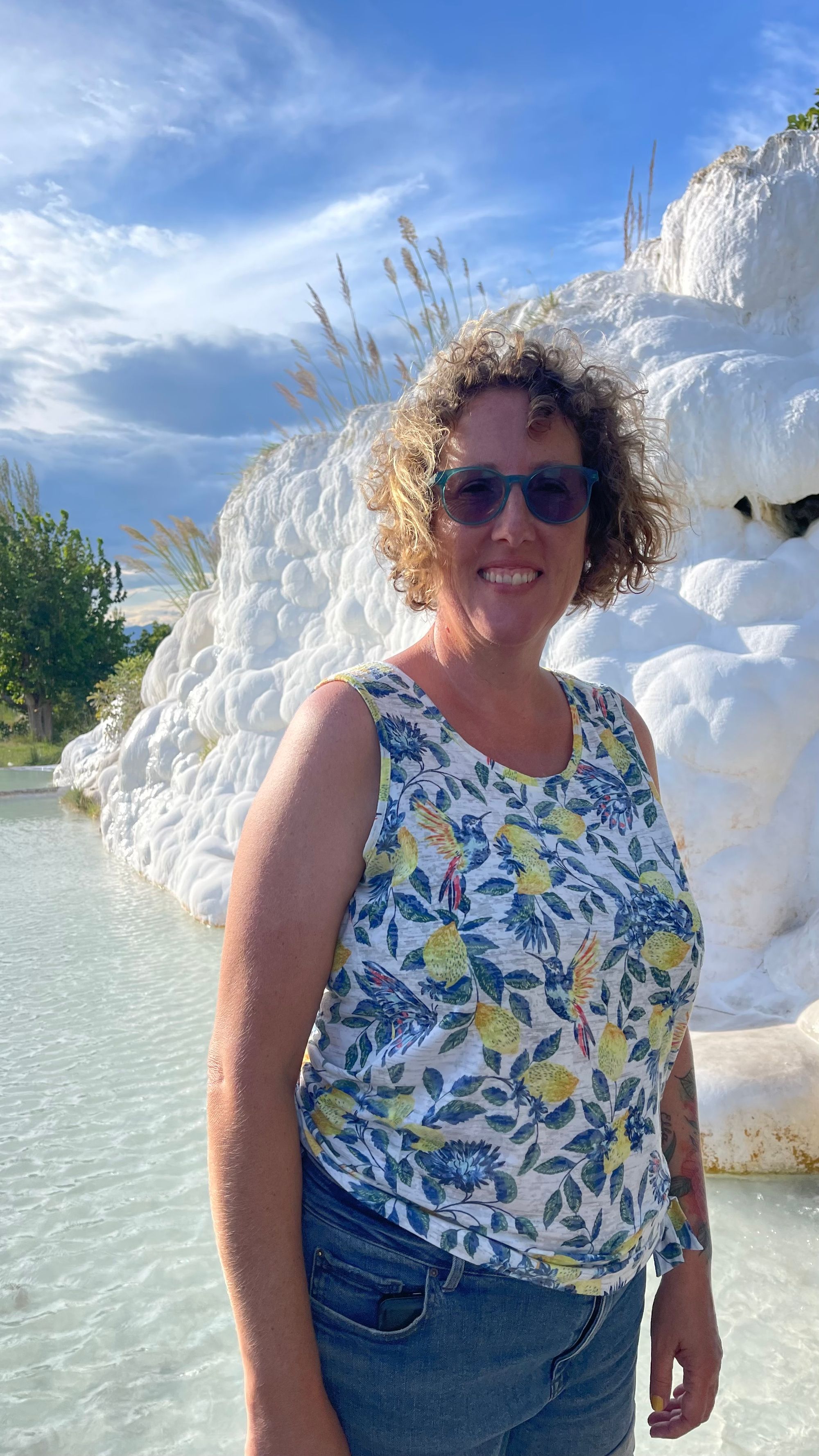
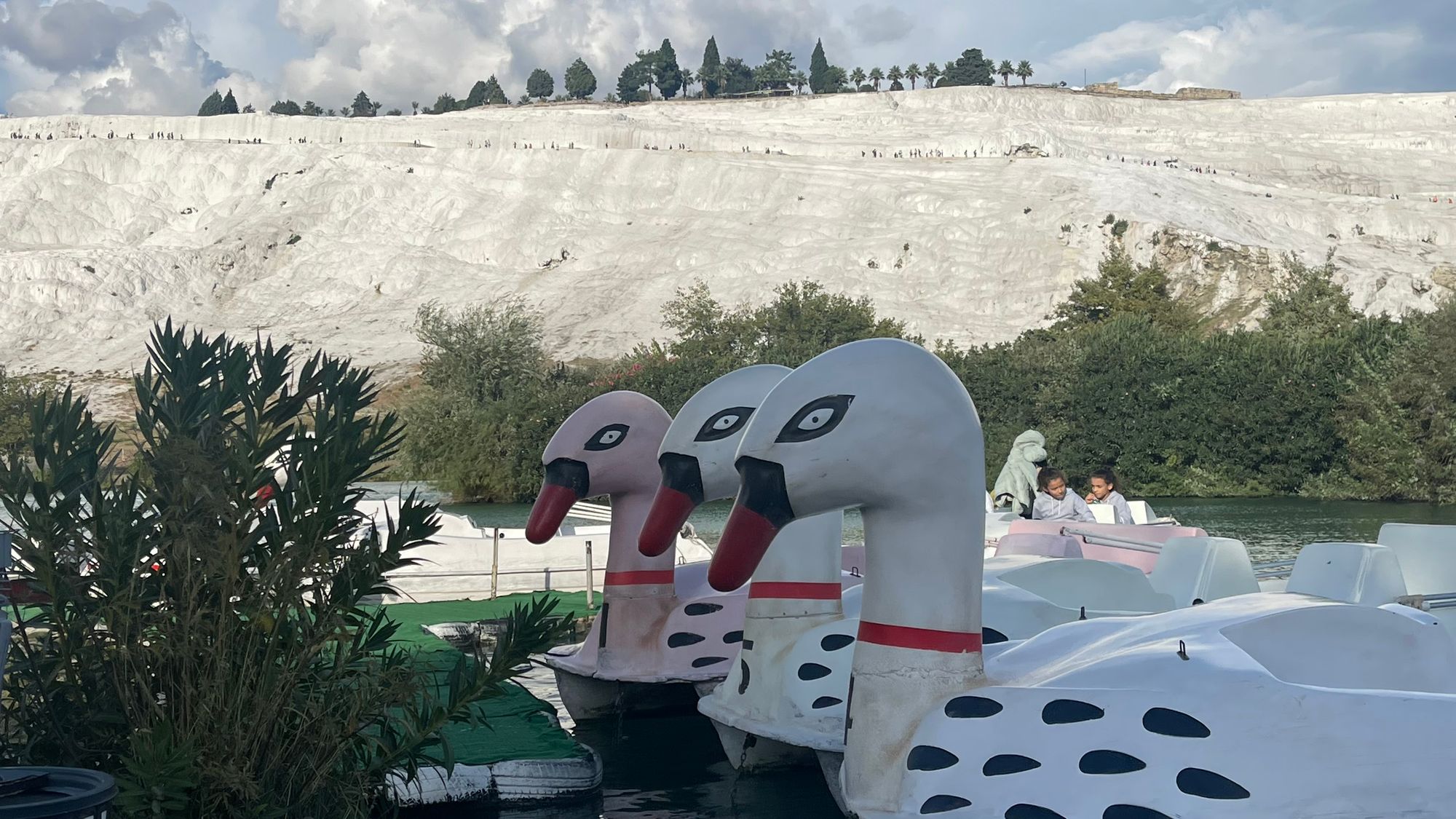
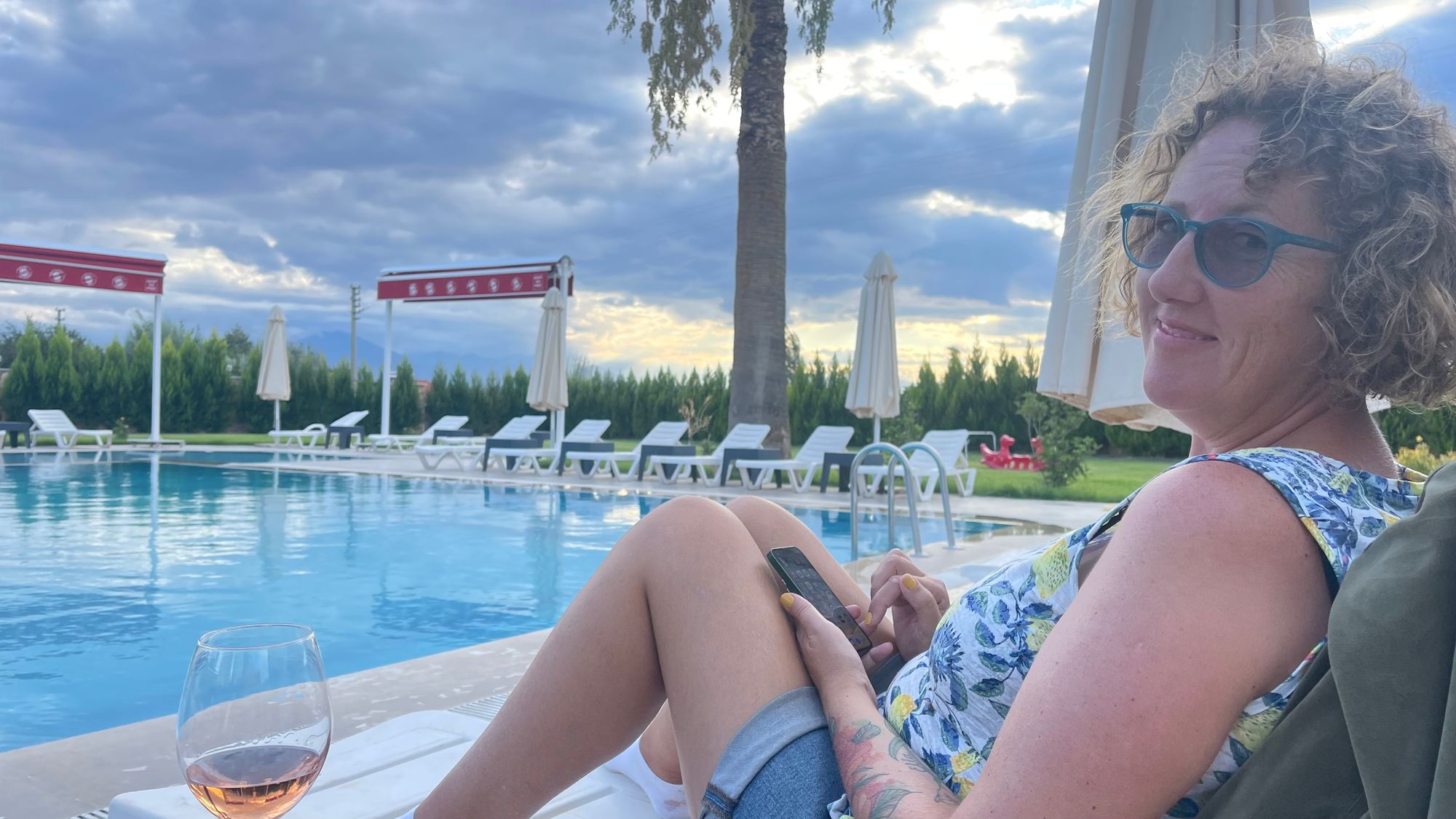
Still, what's left is beautiful; if you come with the expectation it won't look exactly like the poster, what you see is still outstanding and worth the visit. We enjoyed exploring and marvelling at how the calcium had built up, yelled at a few tourists doing the wrong thing by walking over the pristine white lakes (got to speak up and protect what's left for the future), and found it a great spectacle.








The ruin of Heriopolis sits right at the top of the travertines and is strangely barely mentioned, but it's another fantastic Greco-Roman ruin with several intriguing features. It's also another Christian pilgrimage site where Philip, another of Jesus' disciples, was martyred.

Heriopolis was, unsurprisingly, a wealthy spa town and cult centre. It's where you came for cures in the thermal baths and natural springs; the bathhouse was one of the biggest in the city. There is a fascinating building called the Plutonium, one of my new favourite ruins.
It contains a sunken pit that has been squared off, with spring water down the bottom. A marble doorway opens to a black hole in one of the walls. This hole was venerated as one of the entrances to Hades, the domain of the god of the underworld Pluto (Pluto was initially called Hades by the Greeks, but over time, the name Pluto came into favour, and Hades was his domain).

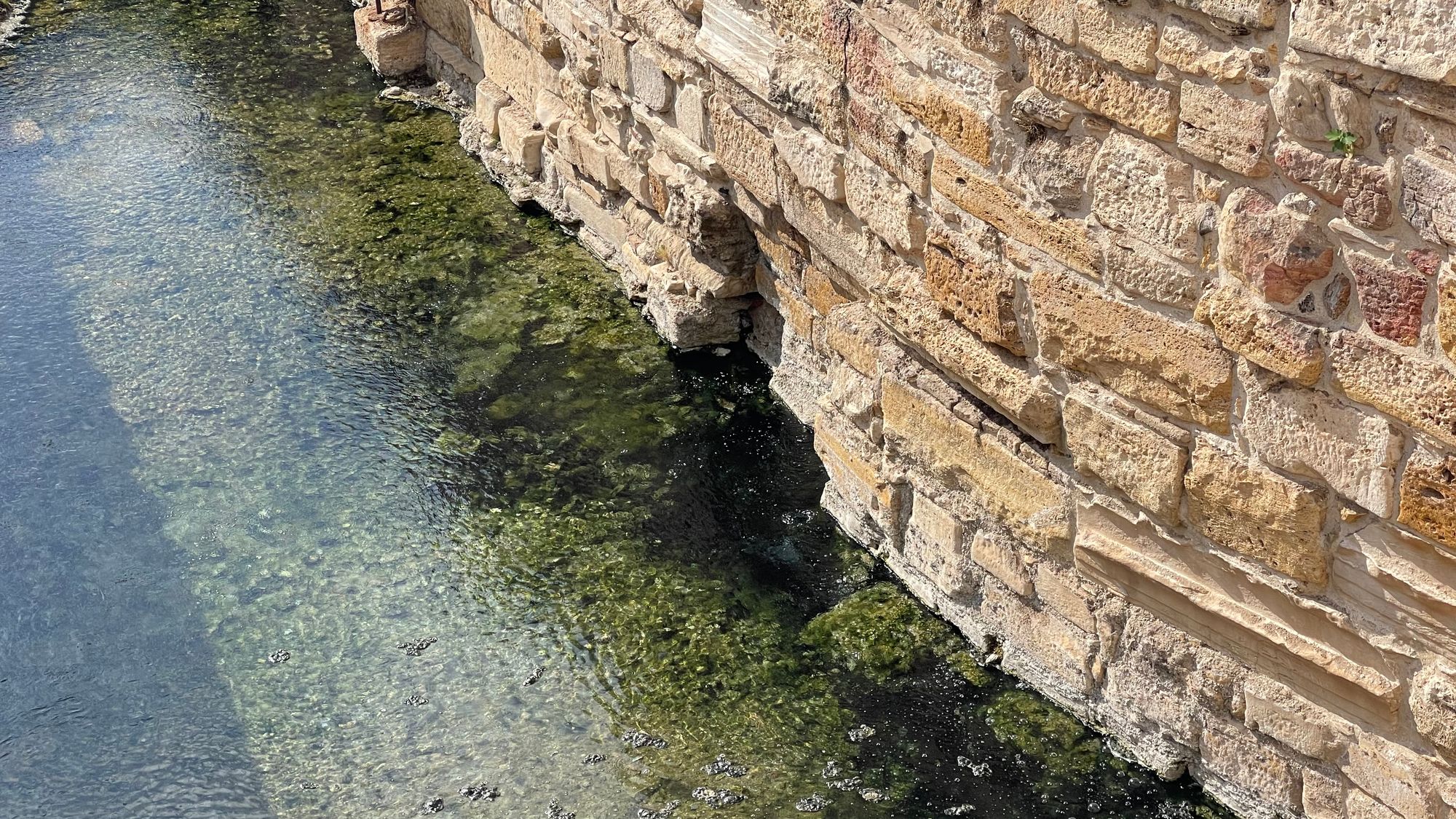
This black hole is a natural cave leading to an underground spring, which spits out noxious gasses and carbon dioxide. The priests would prove their divinity by entering the cave and emerging unscathed – a bit of local knowledge on where to find pockets of oxygen helped with that. But they would prove the power of the god by marching bulls into the entrance, where they would suffocate. It was quite the attraction; you could also buy birds and sacrifice them yourself.
It may come as no surprise that Heiropolis had its own Oracle, although not as famous as the one at Delphi. What we found interesting about this is the parallels - both Oracles were housed in temples above fissures in the earth, leaking gasses that had a hallucinogenic effect. They may not have seen the future, but they were seeing something...


After this, we had to try the baths for ourselves. A pool in the middle of the ruins is fed by a natural hot spring that's around 35C. One exciting feature is that the pool contains the ruins of ancient buildings at the bottom - you are swimming over columns and blocks. The spa is called "Cleopatra's Pool", although this is an affectation. Cleopatra most likely did come to Heriopolis (after all, we're very close to Ephesus), but the history of the baths has nothing to do with her.
The history is a little more mundane. An earthquake in the 16th century collapsed the ruins of a temple into a sinkhole, which then filled with (or already contained) natural spring water. Later, in the 19C, a hotel was built on the top of the ruins to take advantage of the hot springs and the thermal pools; the old city itself was seen as having little value. Now, all these hotels have been removed, but the pool remains.
It's worth it! The swim was delightful, and for the Aussies out there, the best we can liken it to is swimming in "Schweppervessence", thousands of tiny bubbles in the water and all over your skin. Karina accidentally drank some of the water (which is supposed to be safe) and said it was delicious!
After Heriopolis, it was back in the car and a return to Kuşadasi. When we returned to the city, I dropped Karina off at a local shopping mall (5th major attraction at Kuşadasi), a novelty as we probably see fewer malls than ancient ruins these days!
I returned to the boat and chased up some of the tradespeople we'd been trying to talk to. This is where the week takes a bit of a turn. Sunday and Monday were all ancient ruins and history; now, it was waiting on the boat. On Wednesday morning, we met again with the contractor we'd been talking with about replacing the bimini and reached a decision. We're going to do it.
Matilda is about to get an upgrade! A new solar panel arch and modifications to the bimini stainless steel to allow us to drop our radar arch and reduce our air draft (a design feature of the boat, but one that's been lost with the current setup of the biminis). We're also getting all new canvas for the biminis and all new covers to replace the degraded ones. The air conditioner is moving to make it more effective, and then there's the haul-out and fresh bottom paint. With the work agreed to, it just became a question of when.
The painter was free Monday (tomorrow!), so we decided to take that opportunity to complete that work. The company doing the stainless work will also start the demolition of the existing stainless at the same time. It's simple to say, but the whys, wherefores and whens of the timing were stressful to work through.
One thing that caught us was we understood from our lift-out quote that it came with 14 days of free hard stand. Instead, when we went to book it, it turned out that it included the in-water time in the marina, too, so we'd already used seven days of it. The marinas in Türkiye are insanely expensive now; when we inquired about staying out on hard-stand for a month (to allow time for the bimini work to complete), we were quoted around €3,900! More than our annual contract at Mytiline.
What to do? The first thing was to get out of the marina and save our free days! One downside of this area is that there aren't a lot of great bays to shelter in. We could either head to Didim, about 9 hours away, but that was a long way to go to turn around and return a few days later. Instead, we found a bay, just opposite Samos, that's well protected from the swell and the prevailing winds and... we waited.

We've now been holed up here for four nights, the longest time we've stayed on the boat (although I did go paddle boarding). While we are safe and sheltered, the coast is not hospitable. It's also a national park. There's nowhere to go even if you do get off on shore. Each night has been pitch black, a blessing for some fantastic display of stars and on our second night, we even saw a Starlink satellite train - a long line of dots slowly spreading and fading out across the sky.

It's proven to be a bit of a blessing, however. Some of you know that I've been writing a book—a memoir of our travel, life and adventures with Matilda. I've been deep in the final edit for the last four days. Polishing every word, every mistake, tweaking the grammar and then printing it out for Karina to read and cast her detailed eye over. It's been time-consuming, tedious and sometimes frustrating, but now, it's finished! The enforced break with nothing to do was just what was needed to get this one over the finish line. All that's left is to finish setting up my Kindle Direct account (which needs better internet, I think), then wait for the cover, and it's all ready to go! You'll hear more about it here once it's published – it's been a roughly 20-month project from start to finish. So, more to come on this soon...


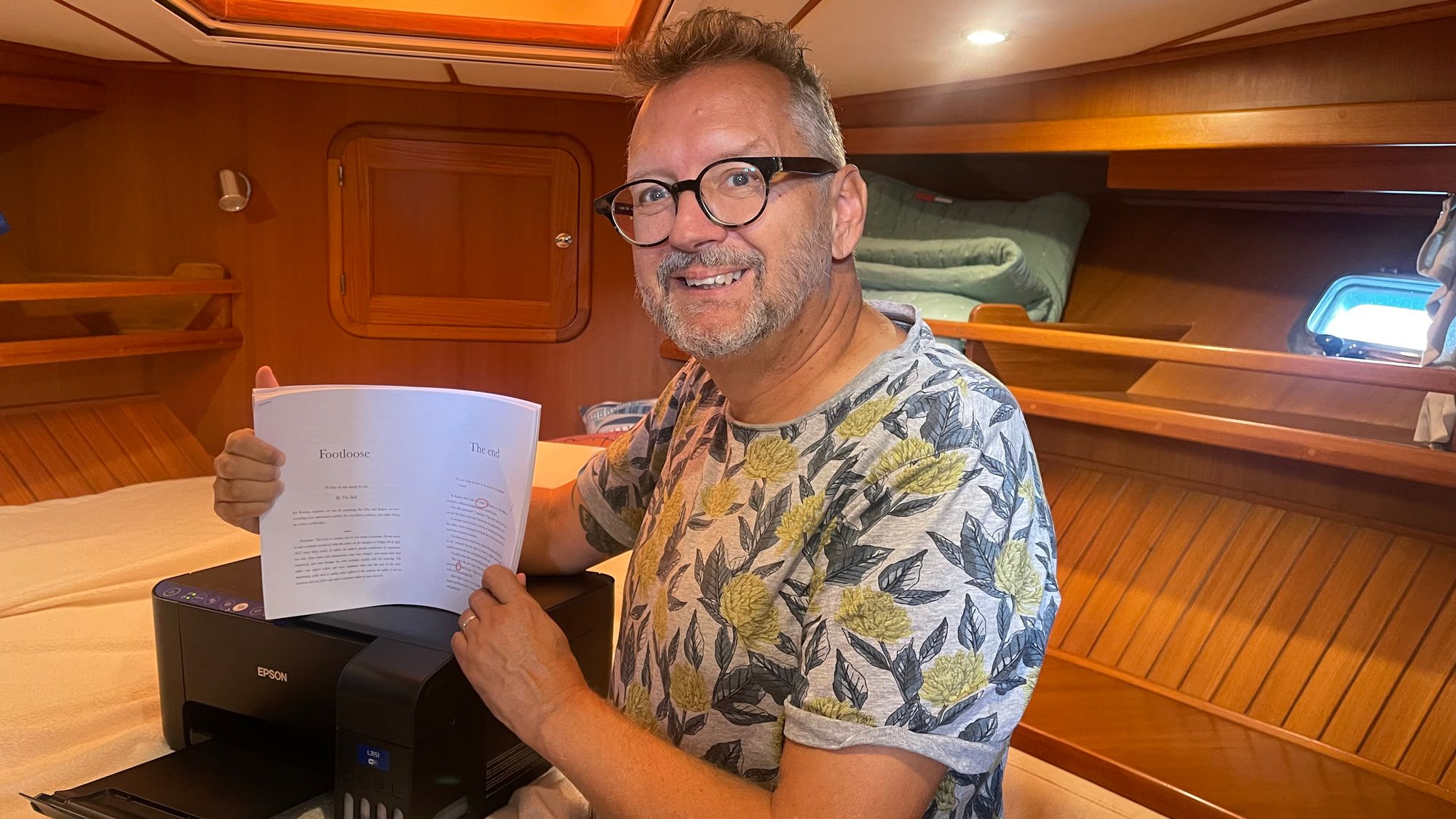
Today, it's back to Kuşadasi and likely a rough anchorage overnight before we haul out tomorrow morning and move to land life for a week! There will be less tourism, more showers and a greater focus on boat jobs. We're excited to get these upgrades to Matilda underway.
Once the initial work is completed, we'll probably tootle around here (perhaps check out of Türkiye and head to Samos in Greece) while we wait for the bimini frame to be manufactured. Then it will be back to Kuşadasi, complete the bimini and solar installation and head for Mytiline and our winter berth. The season is sadly coming to an end.
Until next time
Tim & Karina
